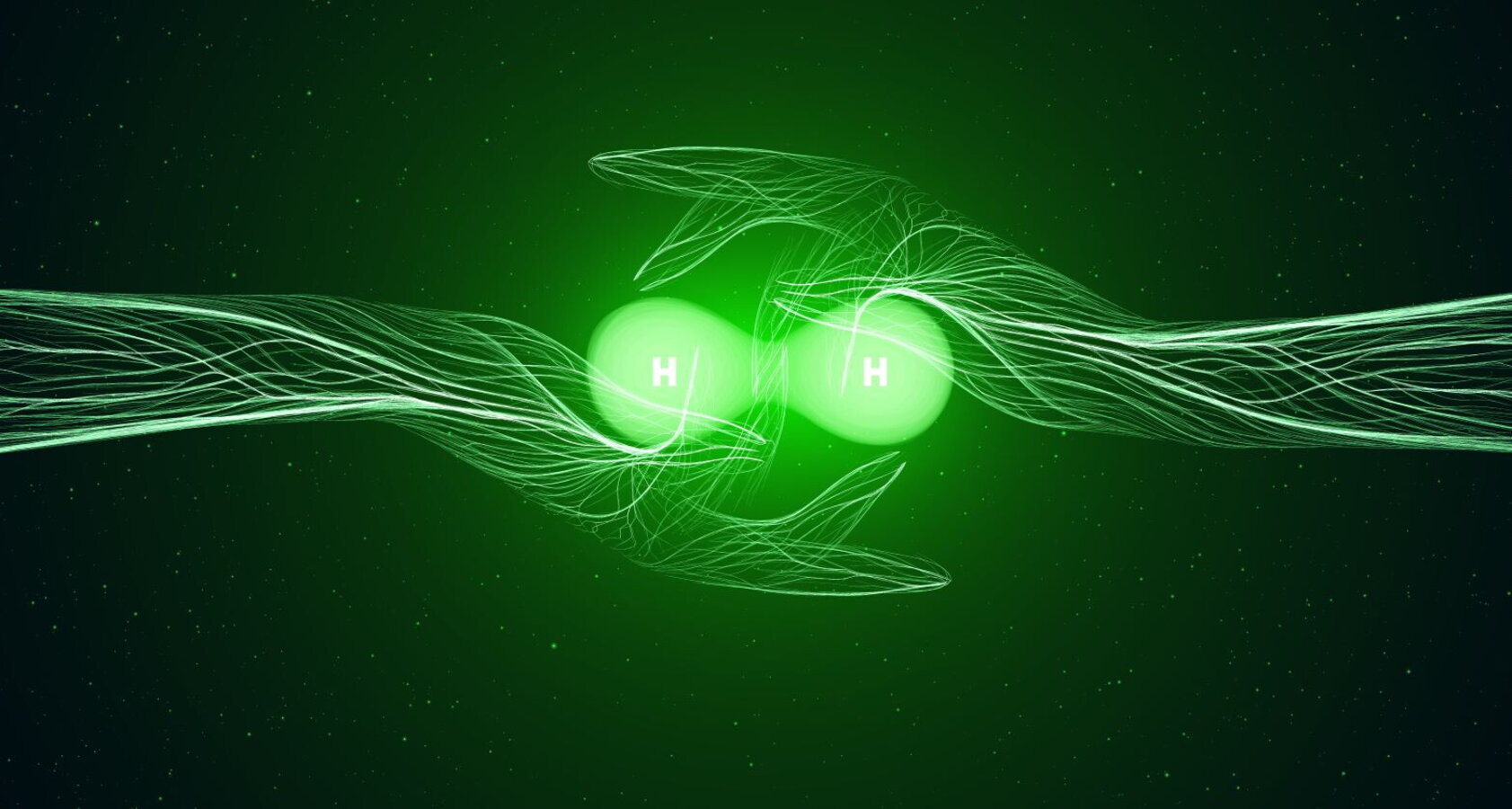
Towards a renewable world
The future of hydrogen
It is one of the most promising components in the decarbonization of global energy systems. Despite the attention of key players, such as the EU, China and the US, we still need to accelerate the development of this resource.
11 minL’
Hydrogen is now widely recognized as one of the most promising components of the energy transition. It can replace fossil fuels in hard-to-abate sectors (such as steel and chemicals) and facilitate the integration of renewables into energy systems (such as storage). Due to this dual role in both industry and power generation, hydrogen has attracted substantial attention from key global players in recent years—particularly the EU, but also China and the United States. Production capacities are expanding, and hydrogen is being considered in both legislative packages (such as the European Commission’s Fit-for-55) and national initiatives and strategies (including the Mattei Plan).
Despite these advances, hydrogen consumption remains limited, with production mainly from fossil fuels (‘gray hydrogen’) and primarily used in traditional applications like petroleum refining and ammonia production. It is therefore unclear whether the global projects and tools available will be sufficient to realize hydrogen’s potential within the tight timeframe imposed by an urgently needed energy transition.
Strengths and weaknesses
Versatility is the key point of hydrogen. In power generation, it offers a cheaper and more adaptable way to store energy than lithium batteries or other technologies (such as hydroelectric storage). It integrates well with intermittent renewables because, in the event of excess generation against low demand, hydrogen can be produced instead of resorting to curtailment. The hydrogen produced can then be used both to generate electricity in the future and for a wide range of other applications.
Hydrogen can be used in transportation (by road, sea, etc.) and in production processes, particularly in energy-intensive industries. These applications are rapidly growing; for instance, in 2023, Norway became the first country to put a hydrogen ferry into operation, and similar projects are being finalized in the United States and the United Kingdom. Projects like HyInHeat (funded by Europe) aim to integrate hydrogen as a fuel for high-temperature heating processes in energy-intensive industries, particularly for steel and aluminum production.
The main problem is that while storage is already a relatively mature use, most of these applications are still at the experimental or design stage, and a global hydrogen market is far from fully established. According to the International Energy Agency (IEA), global hydrogen demand is growing steadily (up 3 percent from 2021 to 2022), but this increase is almost entirely due to traditional uses of hydrogen, which is still produced entirely from gas or coal (the latter mainly in Asia). To fully integrate hydrogen into global systems, the IEA estimates that demand will need to grow by one and a half times by 2030, reaching 150 million tons, with at least a third for new applications.
The challenge for hydrogen now is twofold: we need to create a hydrogen economy (and especially demand) that is largely nonexistent or highly sectoral, and we need to ensure that increased production and consumption are compatible with global climate action. This means focusing on green (or at least zero-emissions) hydrogen, used primarily as part of the energy transition rather than for traditional uses.
Achieving this goal will require rapid development and targeted actions to address specific obstacles. Building a hydrogen economy will mean incentivizing consumption in key sectors through subsidies and facilities, focusing on the most promising areas. For instance, although hydrogen cars are an established technology already used in South Korea and China, deployment has been slow and limited due to competition from electric cars and the difficulty of establishing a widespread hydrogen distribution network. Heavy transport, which has yet to face significant competition from electric vehicles, may have more room for hydrogen-powered vehicles, such as trucks by Volvo, Toyota, and Nikola.
Storage and industrial uses of hydrogen are much more promising but will require particular attention to unresolved technical aspects. Storage technologies could be costly (liquefaction) or inefficient due to hydrogen’s small molecule size (compression). The ‘hydrogen production with excess energy-storage-production of electricity by hydrogen’ cycle still has low efficiency: the electrolysis process is around 60 percent efficient, and the whole cycle is about half that. Additionally, building new infrastructure for hydrogen distribution is a major constraint, especially with uncertain demand. Repurposing natural gas infrastructure could significantly reduce the economic impact, but its potential and real costs are not yet fully understood. For example, in 2023, the German company OGE repurposed a pipeline in Lower Saxony for hydrogen transport, but the costs could be higher than expected.
The European Agency for the Cooperation of Energy Regulators (ACER) estimated in 2021 that a conventional pipeline could handle up to 80 percent hydrogen, but it would require three times as much compression. Finally, ensuring all new hydrogen is green will necessitate a substantial increase in renewable generation. The Joint Research Centre (JRC) estimated in 2021 that an additional 8,900 to 9,800 GW of renewable capacity will be needed globally by 2050, mainly from wind and solar.
The importance of European involvement
These are complex but solvable hurdles, especially the technical aspects, as has been the case with other technologies in the past: with solar photovoltaics, for example, the cost of generation plummeted by 90 percent between 2011 and 2015. This is mainly because of the significant attention already given by key players in the global energy sector to hydrogen. The EU is certainly one of the most advanced and was among the first to act in this area, publishing a strategy in 2020, followed by a series of proposals in the REPowerEU plan and Fit-for-55, later included in the new Renewable Energy Directive (effective November 2023) and the Hydrogen and Decarbonized Gas Market Package (effective May 2024).
These initiatives have translated into significant practical measures: the creation of a European Network of Network Operators for Hydrogen (ENNOH), similar to the equivalent ENTSO-E (electricity) and ENTSO-G (gas), a European Hydrogen Bank to support projects (with an outlay of €720 million for seven initiatives in the first half of 2024 alone), and the financing of other initiatives through additional instruments such as the latest list of Projects of Common Interest (PCIs), more than a third of whose budget has been devoted to hydrogen-related infrastructure. The EU’s goal is to achieve the ambitious target set with REPowerEU: to consume 20 million tons of green hydrogen by 2030 (half imported, half produced domestically). Therefore, for the EU, the key will not only be stimulating European production but also establishing new connections with partners such as Algeria, Morocco, or others overseas—an objective also contained in the national hydrogen strategies of countries like Spain and Italy.
However, this involvement is not only European. For the United States, the issue is less strategic than for the EU, where hydrogen could also support energy diversification from Russia. Despite this, the US included several significant hydrogen measures in the Inflation Reduction Act (IRA) of 2022, primarily translating into tax credits and other tax incentives designed to increase domestic production of machinery such as electrolyzers. China already has solid leadership in electrolyzer capacity, with nearly 220 MW in 2022 (according to the IEA) and another 750 MW expected to come online in 2023. According to Norwegian energy consultancy Rystad Energy, China could reach its 2025 target of 2.5 GW by the end of 2024. Some major projects for hydrogen pipelines are also underway, connecting the energy-intensive area around Beijing with renewable production in northern provinces such as Inner Mongolia and Hebei.
Perhaps the most interesting development could be in regions with high renewable potential but low local demand for both energy and hydrogen, allowing them to export the resource. This is the case in Namibia and South Africa, the only two countries in Sub-Saharan Africa with dedicated hydrogen strategies. Both have great potential for solar and wind energy. South Africa, in particular, with 90 percent of its population having access to energy (compared to Namibia’s 55 percent), could allocate some new renewable capacity in remote areas, such as the Northern Cape, for export. Similarly, Chile is experiencing a wind and solar boom throughout the country, especially in the Atacama Desert, but significant curtailment limits further renewable development. The geographical difficulties of developing networks in a very long country with a highly dispersed population present another challenge. Hydrogen expansion could provide an opportunity to overcome these obstacles and support the energy transition. However, this will require developing a global hydrogen market to support exports, which will be crucial for lowering technology costs in other regions as well.

